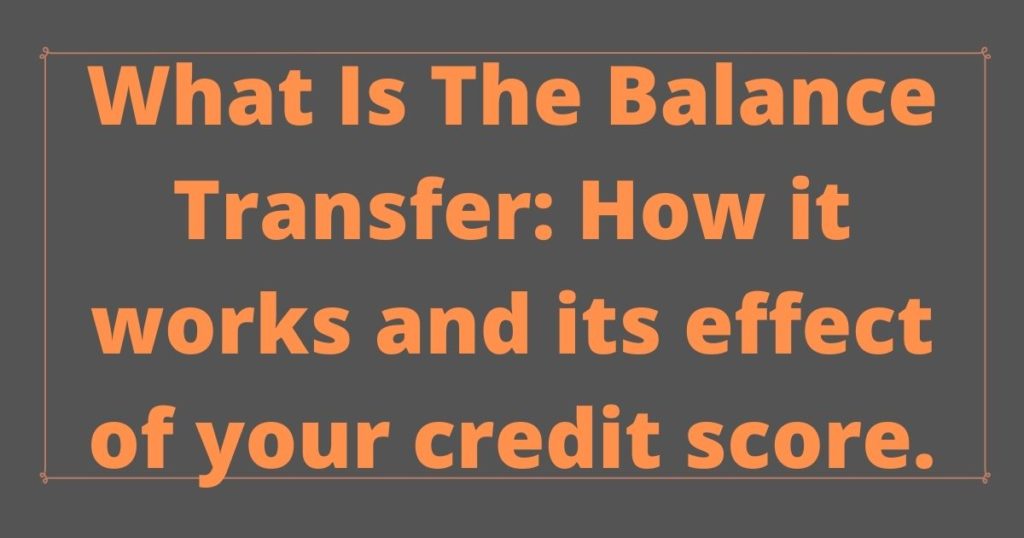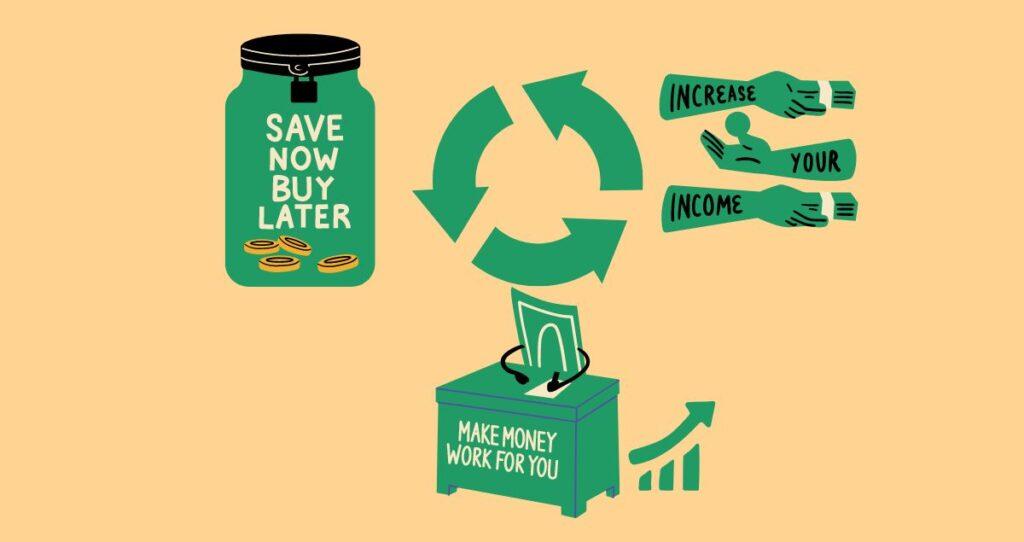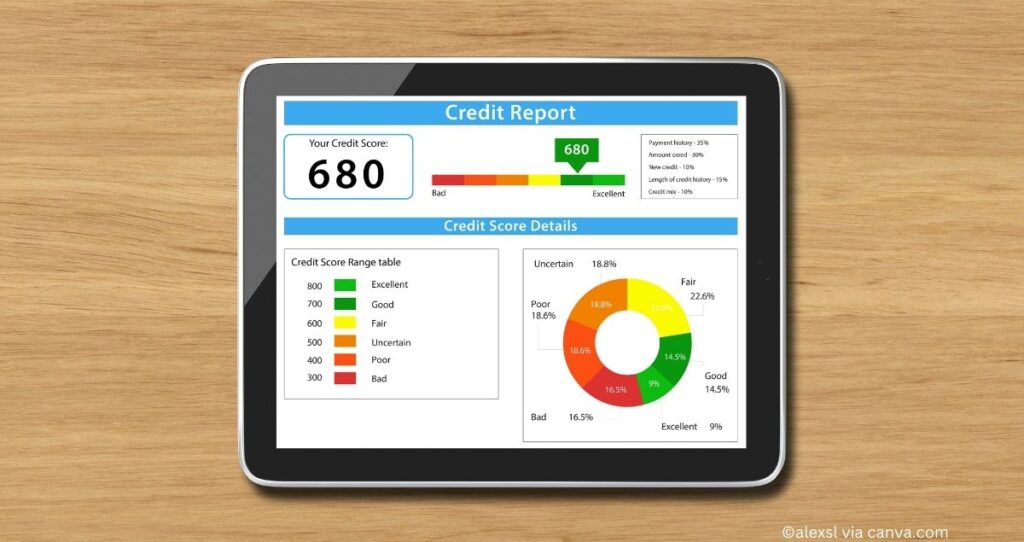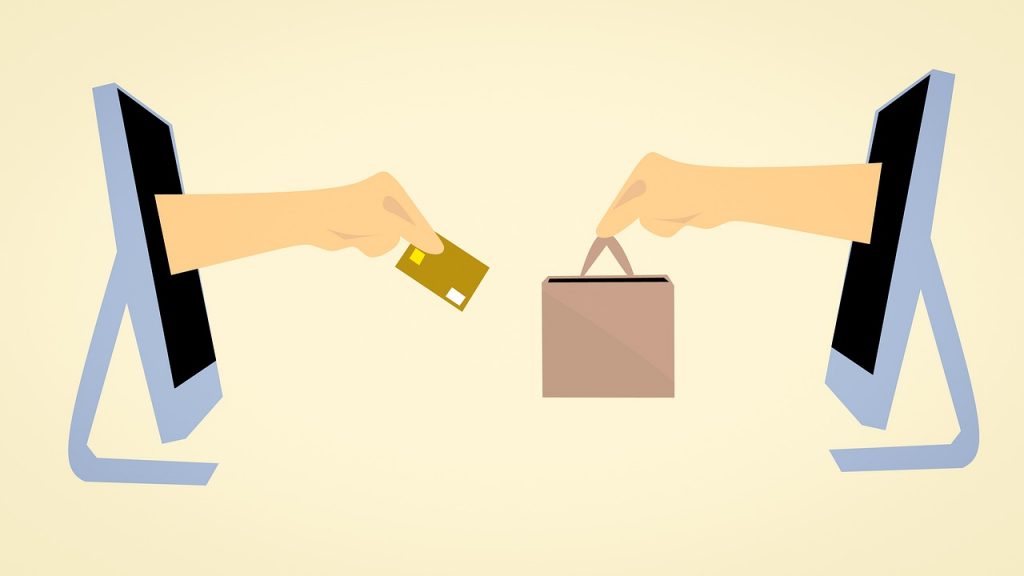The balance transfer is a process of moving your existing debt from your credit account to another. If you have a credit card with a high annual percentage rate(APR), you can transfer this balance to a new card with 0% APR. This technique will help you pay off your balance faster and save you money.
The balance transfer does not reduce your outstanding balance. However, your new APR will be 0% if you transferred your debt to a 0% APR account.
You must pay off this debt as fast as you can before the end of intro APR period.
In this article, we will explain in detail how the balance transfer works, requirements, and much more.
How do balance transfers work?
Transferring your balance from one credit account to another means that you will owe nothing to the previous lender.
Your second issuer will pay the balance to the previous lender and apply charges on the new card you received.
Credit card companies will allow you to transfer your balance. The company you are living will not worry at all, because the money you owe them will be paid. At the same time, the new lender will not mind because they will be getting a potential customer.
As a result, everyone will benefit from the transfer.
It is a good idea to apply for the balance transfer as soon as you open your new credit card account.
Even if you have transferred your balance to a 0% APR card, there is still money to be paid every month. Like any other credit card, you must pay the minimum monthly payment for the balance you owe.
Failing to do so will result in interest charges and your credit report will not look good.
What is the balance transfer fees?
The balance transfer fee is the money a lender charges you to transfer your existing balance from one lender to another.
The balance transfer fee will usually be a percentage of the balance you want to transfer. According to Credit Karma, you can expect between a 3-5% fee.
This fee will go to the lender who is assuming your credit card debt.
How to save money during a balance transfer?
The balance transfer can cost you a lot of money if you don’t do it the right way. It is possible that you can move your debt to a much worse card that will cost you a lot of money.
To make sure that you save money during the balance transfer process, use the following tips:
- Apply for the balance transfer as soon as you get the new credit card
- Read policies and terms regarding the balance transfer from your new credit card issuer
- Find a lender that will charge you a lower fee: Going with a lender who will charge you the lowest fee should be a priority. For example, If you are transferring $10,000 and you pay a fee of 3%, the total fee on this transfer will be $300. What if you are transferring the same amount and the fee is 5%? In this case, you will pay $500 in fees. That is a $200 difference in fees.
- Get a card with 0% APR for the longest time possible. Credit card issuers usually let you use the card 6-18 months of 0% APR
- Find a credit card with $0 intro balance transfer fee
- Get a credit card with 0$ annual fee
What are the benefits of balance transfer?
Although your balance will stay the same, there are a lot of benefits to the balance transfer. For example, you will have relief if you are having trouble paying your balance due to a high APR.
The following are some of the benefits of balance transfer.
- Your previous lender will be paid before you fall behind on your payments
- The balance transfer will give you a chance to stop paying a high APR for a while
- The transfer will help you reorganize your finances
- You can benefit from the new card with rewards, mile points, etc.
- Your debt could be paid off faster. If a high APR was a burden for you, transferring your balance to a 0% APR credit card can speed up your payments.
- You will save money if you take advantage of paying your debt off during the intro APR time frame
What are the disadvantage of balance transfer?
- Your credit score could go down in the near term.
- The deal will not last long. After the intro APR time is over, you will go back to paying a higher APR.
- You could be tricked into getting a bad credit card if you do not do your homework
- You will not qualify for the balance transfer if your credit score is bad. According to Experian, credit card issuers require a good or excellent credit score for a balance transfer. You should have a minimum credit score of 670 to qualify for the balance transfer. The higher your credit score, the better. If a lender is to assume your debt, they have to make sure that you are a good borrower. Your credit score will confirm your creditworthiness.
- You will pay a balance transfer fee that is between 3-5% of the total money you are transferring
Does the balance transfer has a maximum amount allowed?
There is a limit to how much you can transfer. Lenders will not assume responsibility for all your debt.
The maximum amount you can transfer will be different from one account to another depending on their issuers. Some credit card issuers can accept a higher transfer whereas others may accept less under the same conditions.
The maximum transfer you can make in some cases will be an amount equal to your total credit limit on the new card, according to Experian.
Some credit card providers can set a limit to how much you can possibly transfer. For example, Chase Slate can allow you to transfer up to your total credit limit or $15,000 depending on which one is smaller, according to CNBC.
This means that if your new credit card limit is more than $15,000, the maximum you will be allowed to transfer will be $15,000. At the same time, if your line of credit is lower than $15,000, your total transfer will be an amount equal to your line of credit.
Since there is no exact amount you can transfer, the only thing you can do is to transfer as much as you can.
Will the balance transfer hurt my credit score?
The balance transfer will not directly affect your credit score. According to the WalletHub, balance transfers are not recorded on your credit report. For this reason, balance transfers will not directly affect your credit score. However, the balance transfer will affect factors that can affect your credit score depending on circumstances.
According to U.S.News, the balance transfer will affect your credit utilization, credit age, and line of credit. All these three factors can affect your credit score.
- Credit utilization: Your credit utilization is the amount of money you have used out of your total credit limit. For example, your credit utilization will be 10% if you used $300 and your credit limit is $3,000. Transferring your balance to a new card will increase your credit utilization to that card. If your card had a credit limit of $5,000 and you used only $100, your credit use before the transfer is 2%. What do you think will happen if you transfer $4,000 on this card. Well, your new credit utilization for this card will be 82%. This event will not affect your credit score under one condition. The credit account where you transferred debt from must remain open. By keeping your old account open, you will still have the same credit utilization. The only difference is that your old account will have no credit utilization, whereas your new account will have the credit utilization from your old account. On the other hand, if you close your old credit account, your credit utilization will increase and this will reduce your credit score.
- Credit age: Your credit age is the average in years or months of how long your accounts have been opened. If your account has the following ages 1,1, and 7, your credit age will be 3 years ((1+1+7)/3). From this example, you can see that once you transfer the balance to a brand new card, your credit age will decrease. This is because your new card account will have a shorter age (0 years). As a result, the average of all your credit accounts will be lower (((0+1+1+7)/4) = 2.5 years). This will reduce your credit score.
- Line of credit: Your line of credit is the total amount your lender allows you to spend on a credit card. If you transfer your balance on a new card, your line of credit will increase. This is because your new card will come with its own credit limit. Keep in mind that before the lender qualifies you for the new card, he will run a hard inquiry on your credit report to see if you are worth the credit. A hard inquiry will reduce your credit score. According to Experian, your credit score will lose between 5-10 points from a hard inquiry. A hard inquiry can stay on your credit report for up to 24 months and will not affect your score after 12 months, according to Credit.
What should I do if I am not qualified for the balance transfer?
The balance transfer is not for everyone. Unless you are in good standing financially, you will not be qualified. Your credit score will be the primary factor to determine whether or not you will qualify for the balance transfer.
If you are not qualified for the balance transfer, there are proper steps you can take to to move foward with ease.
- Improve your credit score: If you are denied because of your credit score, try to improve your score and reapply later. You can use the following 8 tips to improve your credit score.
- You can transfer the balance to another card you already have with a low APR. This way you will save money on a reduced APR.
Related article: Why is a credit score important?
What are alternatives to balance transfer?
You can always payoff your debt without transferring your debt to another lender.
The following are tips you can use to pay off your debt without the balance transfer.
- Use tips I provided in the following related articles:
How to payoff credit card debt?
11 tips you can use to pay off debt
How to avoid paying interest on credit card
- Use a debt consolidation loan: The debt consolidation loan will transfer your balance to another lender. This is a loan you will use to pay off your credit card debt. You must apply for the loan and get approved. Instead of getting a 0% APR, you will get a regular interest on the loan.
- Request a lower interest rate from your lender: It is possible that you can request a lower rate from our lender. You just need to give them a call and explain your situation. Of course, there are conditions you must meet to qualify for a lower APR. For example, you could get approved for a lower rate if you made all your payments on time, used the credit card they gave you wisely, and have a very good credit score.
- Use professional debt management entities: Debt management companies can guide you through the process of paying off your debt. It is possible that you will pay no fee on your first visit.
Tips you can use for the balance transfer
You can use the following tips to help you navigate the balance transfer process.
- Know your credit score: Your credit score is very important when it comes to the balance transfer. You will need to know if you are qualified for the balance transfer before you begin the process. You don’t want to get a denial letter from a card issuer if you can figure it out yourself. If your credit score is not good, improve your score before you send in your balance transfer application.
- Decide whether you want to transfer the fund on a brand new card or existing one: If you want to move your debt on a new card, you will have to apply for a new credit card. You can use this article: how to get a credit card. Follow instructions in this article and apply for a new card. If you choose to transfer your balance to an existing card, you will not apply for a new card.
- Shop around: Make sure that you do thorough research before you apply for a particular card. There are a ton of credit cards and credit card companies out there. Compare many offers in order to decide the best credit card. You could end up with a scam if you don’t do your homework.
- Know your credit limit on the new or old card: If you applied for a new card and got approved, you have a new credit limit on the card. If you use your existing card, you know your credit limit on the card already. You need to know your line of credit as it will be used to decide how much debt you can transfer.
- Rates can change and the 0% APR is not guaranteed: Although the 0%APR is a primary target, there is no guarantee you will have it on your new card. Keep your mind open about paying some interest rate on the new card.
- Make a decision on how much you want to transfer: At this time, you will make a decision on how much you want to transfer. Again, the amount you can transfer will depend mainly on the credit limit of the card you want to transfer your balance to. Some lenders can allow you to transfer a much lower credit card debt.
- Use the new card responsibly: The balance you just transferred on that new card will have a minimum monthly payment. You must always meet this payment. At the same time, if you don’t have a 0%APR, you will be paying an agreed-upon APR on the outstanding balance. For this reason, you must avoid using your new card if your APR is not 0%. Using your new card will increase your balance and the interest charges you pay every month.
- Keep your old account open: You must always keep your account open even if you do not use your credit cards. If you close the old account, your credit usage will increase and the number of accounts open will decrease. This event will negatively affect your credit score and your credit report.
- Have a plan on how to pay off the balance: It is very important that you pay off your balance before the intro APR ends. This is because you will go to a higher APR once this period ends. If you did not pay off your balance during this period, you would have gone through the hustle for nothing.
Is the balance transfer for me?
You can always use the balance transfer to evade higher APR on your credit card outstanding balance. So, how do you know if it is the right path for you? You can use the following tips to decide whether this is the right path for you.
- Your credit score is good or excellent
- The interest rate or APR you have is too much to bear
- It is possible to fall behind on your payments if you do not do something about your debt
- You have a payment plan in place once you are accepted
- You are a responsible person and you commit to your decisions
- There is no other option you can use
- You don’t want to get a debt consolidation loan
How long does the balance transfer take?
The balance transfer does not happen in a single day. It takes time for the entire process to complete. According to Experian, the credit card balance transfer can take between 5-7 days. However, it can take up to 21 days, in some cases.









